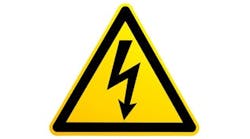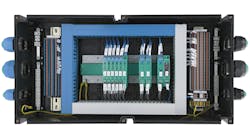In the article "Operator Interface in Hazardous Areas," Senior Technical Editor Dan Hebert covers some of the requirements for building industrial equipment for hazardous areas. Hebert's article explains how NEC standards classify hazardous areas differently — by zones, classes, divisions. He also makes suggestions how machine and robot builder OEMs can provide safety in these risky environments. Read this column to learn how designing systems for use in an environment where hazards are likely to exist under normal operating conditions differs from designing systems for use in standard environments.
New White Papers
Hazardous Locations Safety Handbook
This handbook educates users on the proper selection of electronic weighing systems used in hazardous locations.
Explosion Protection and Intrinsic Safety 101
Everything you need to know about intrinsic safety technology, hazardous locations, surge protection, HART interface solutions and signal conditioning.
Installing Automation in Hazardous Areas
Learn how to protect automation system components when used in hazardous locations.
Hazardous Location Guide
Download this e-book to better understand hazardous locations and protection methods. Learn about intrinsic safety from industry leaders.
Did you know you can receive Control Design electronically?
Subscribe to the digital issue of Control Design and you'll be able to download a high-quality PDF of the magazine exactly as it appears in print. Not only that, we'll send you an e-mail each month when it's ready for you!
When it comes to working safely around high-power energy sources, industry workers must make sure that power supplies are specifically designed and certified for what they need. It usually means that power supplies must follow fieldbus intrinsically safe concept (FISCO) or fieldbus non-incendive concept (FNICO) standards.
Contributing Editor John Rezabek discusses energy-limiting requirements for intrinsic safety (IS) in his article "DART Targets Intrinsic Safety." He asks what might happen if live working never created an arc in the first place. Read this article to learn how IS requirements have changed over the years. See Rezabek's report on how energy-limiting requirements of IS previously led to serious limitations for process buses such as Profibus-PA and Foundation fieldbus, and how FISCO and FNICO practices allow high enough power budgets to increase the number of devices permitted and simplify IS calculations.
Safety in hazardous areas can be costly. However, intrinsic safety makes protecting field devices easier and cheaper. How so? To get the answer to this question, read the article "Less Bang for the Buck," written by Walt Boyes, editor in chief for sister publication Control.
Boyes recaps the three kinds of explosion safety systems: explosion-proof, purge and pressurization, and explosion prevention. The article looks at the basics of explosion prevention and examines what intrinsic safety is and what it isn't, summarizes hazardous area classifications, and touches on IS for analog, HART and fieldbus devices.
If you are looking for more information on machine safety and intrinsic safety, stop by our site and check out other articles, news, white papers and products covering this subject.



